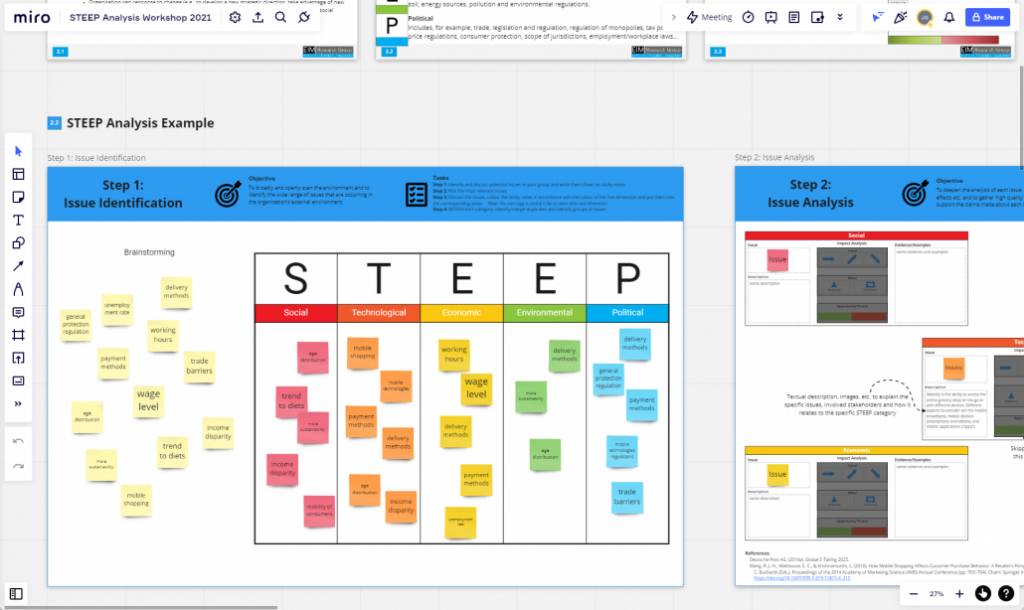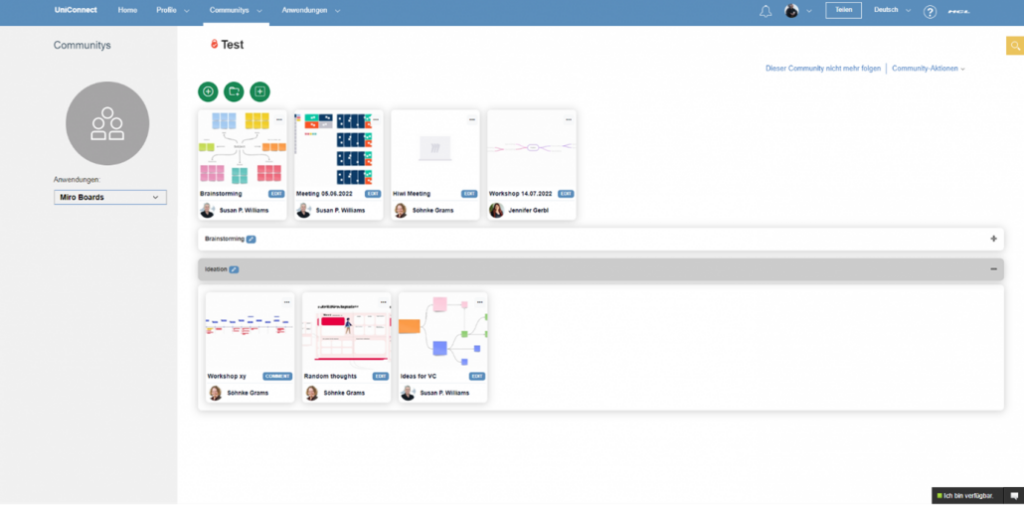The need for digital alternatives for training and development workshops has increased due to digital transformation, advances in digital workplaces, and the increasing number of people working from home or in distributed teams. This demand proved to be even more critical during the COVID-19 pandemic, when physical workshops were not possible, and digital solutions had to be found to provide remote access to business meetings as well as for delivering engaging and interactive workshops. Since working with a whiteboard is an essential part of most workshops and in the daily work of many employees, there is a need for a deeper investigation of visual collaboration tools that can be described as digital whiteboards. These tools offer graphical elements to visualise ideas and methods for facilitating collaborative work on a shared canvas or workspace enabling multiple collaborators to work together synchronously or asynchronously. This research is part of the DFG-funded project 2C-NOW (Collaboration and Coordination in Networks of Work) and the overarching CEIR research program. In the scope of 2C-NOW, the CEIR team is investigating transformations to work processes and practices in large-scale, heterogeneous enterprise collaboration platforms to obtain a deeper theoretical and practical understanding of how collaborative work takes place within the digital workplace in organisations.


Facilitators of online workshops must choose a suitable visual collaboration tool for their needs and find ways to use these tools effectively. Therefore, it is essential to understand the functionalities and capabilities of those tools and how they can and should be used to achieve the expected goals. In our research, we took a closer look at visual collaboration tools by identifying currently available tools and investigating how these can be utilised to facilitate engaging online workshops. Furthermore, we have developed and applied an evaluation schema for analysing multiple visual collaboration tools. As an outcome, we revealed which features can be considered standard and which are essential for visual collaboration tools. For example, virtual sticky notes and different shapes such as squares and circles are crucial regarding the drawing capabilities needed to prepare an engaging online workshop. Furthermore, by working with these tools, we identified awareness and facilitation mechanisms such as live cursors, timers, or possibilities to guide collaborators through the board.
We then focused on the lived experience of practitioners using these visual collaboration tools. To understand how facilitators of workshops can utilise these tools to run engaging and creative online workshops and how these tool support work and collaboration, we conducted a series of digital workshops that were realised with the assistance of Miro, one of the state-of-the-art visual collaboration tools. An example of our conducted workshops is portrayed in the following image and shows part of the Miro board that has been used to run an interactive workshop and lecture session with student groups.

Conducting and analysing these workshops using an Action Research approach, we gained various insights regarding the planning process, how to create and design an online workshop, and their effective facilitation. We have summarised these results in the form of guidelines, best practices, templates, and checklists that help practitioners to use these tools proficiently.
In a different strand of research, we are currently investigating ways and possibilities to integrate a visual collaboration tool into enterprise collaboration software to enrich the digital workplace. We are currently developing a prototype implementation to gain a deeper understanding of the integration capabilities of a visual collaboration tool and how it can be seamlessly integrated into an enterprise collaboration system. The prototype aims to integrate Miro into the enterprise collaboration software HCL Connections. A preview of the prototype can be seen in the following image.

Since there are currently only a few integrations of visual collaboration tools into enterprise collaboration systems, this research is intended to generate knowledge about the integration possibilities of such tools. Additionally, we are developing an integrated, fully functional prototype application in UniConnect to provide the advantages of a visual collaboration tool to community members. A first prototype is being used successfully by students who are collaboratively preparing an assignment on UniConnect. For us as researchers, who need to collect research data from workshops, interviews and focus groups, such an expansion of our digital workplace would be valuable because the collection of our reactive data will probably often take place online in the post-COVID era. We are therefore already looking forward to further research results and want to thank Miro for supporting us to work on and with their visual collaboration tool for research purposes. We hope that this fruitful cooperation can continue and be intensified.
Authors: Jennifer Gerbl, Leonardo Malzacher, Söhnke Grams, Susan P. Williams